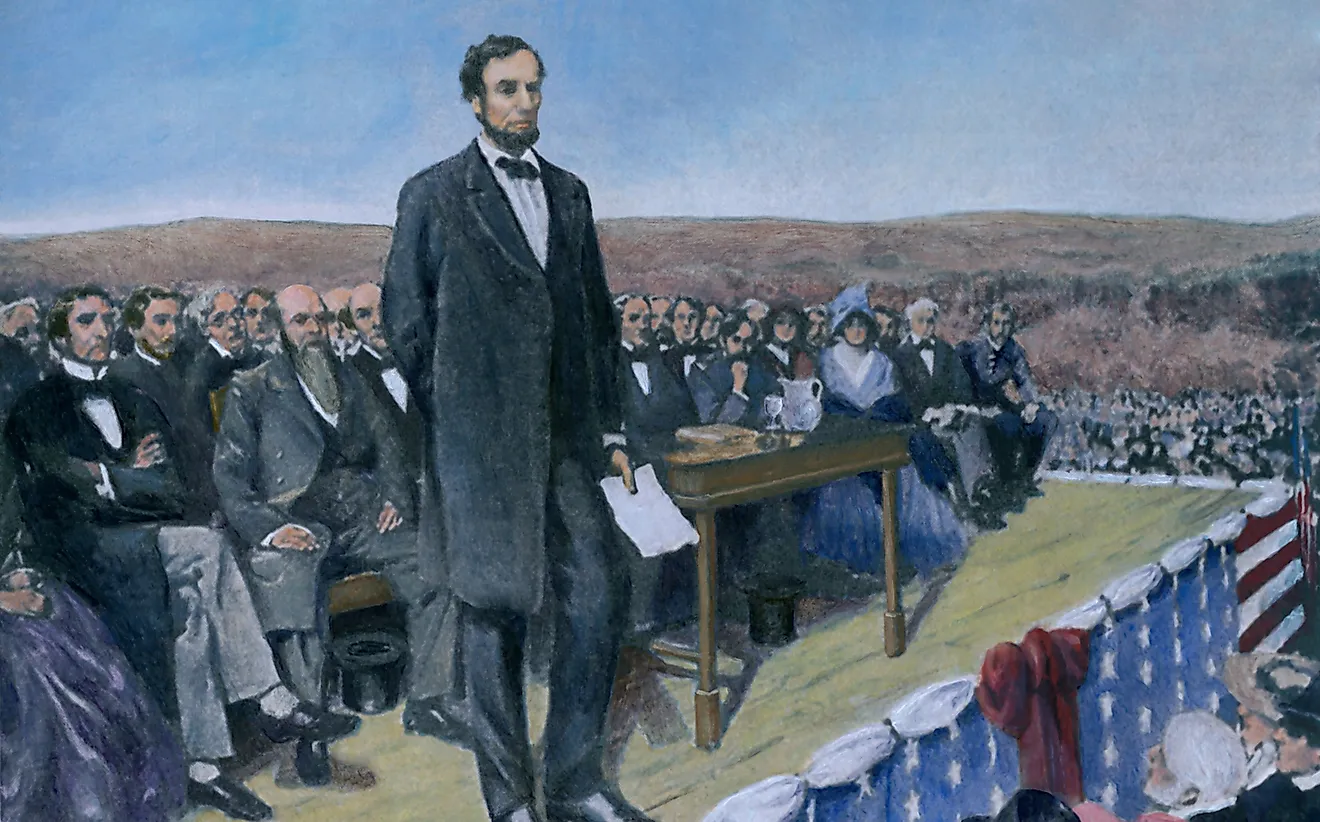What Was the Reconstruction Era?

The Reconstruction era was a period of United States history that lasted from 1863 to 1877, immediately following the Civil War. The name “Reconstruction” referred to the daunting task of restoring the formerly seceded states of the Confederacy to the Union, thus reconstructing the United States of America as one whole nation again. Reconstruction was a complex and tumultuous project that spanned four presidencies and was marked by conflicting factions, political upheaval, and a huge variety of interlocking environmental and social factors.
Goals of Reconstruction
Reconstruction dealt primarily with three core issues: how to grant civil rights to all of the newly freed black Americans, how to reincorporate the eleven former Confederate states into the Union and reseat them in Congress, and how to deal with the leaders and officers of the former Confederacy.
A Brief Timeline
Reconstruction began in 1863, President Abraham Lincoln declared all slaves free with the Emancipation Proclamation. Lincoln sought to grant full civil rights to these freedmen, a goal which the Radical Republicans at the time supported and the Democrats vehemently opposed. In 1865, Congress passed the first of three key constitutional amendments that guided Reconstruction: the 13th amendment, which abolished slavery in the United States.
After John Wilkes Booth assassinated President Lincoln in 1865, his Vice President, Andrew Johnson, took office as president. Johnson was a Democrat, and though he opposed the Confederacy he favored swift and lenient measures to bring the former Confederate states back into the Union, including allowing each state to decide for itself whether to grant rights to freedmen. The Radical Republicans sought much stronger policies for Reconstruction, and in the election of 1866 they gained control of Congress, which allowed them to pass the 14th amendment, which guaranteed full rights and citizenship to anyone born or naturalized in the United States, in 1868.
In the election of 1868, the people elected Ulysses S. Grant as president. Grant, a Republican, supported stronger measures for Reconstruction than his predecessor, and imposed martial law in most of the former Confederate states to ensure that the freedmen’s newly granted rights were enforced. During his first term, Congress passed the final amendment of Reconstruction, the 15th amendment, which declared that the right to vote could not be denied on the basis of race, color, or previous condition of servitude.
After two terms in office, however, Grant was still not able to find a lasting solution to the tensions that remained between the North and the South. Freedmen were guaranteed citizenship and civil rights under the Constitution, but ongoing racial and political violence undermined these rights and divided the country despite all efforts to reunify it.
By the time of the next election in 1876, the people were tired of this constant conflict and upheaval and eager to move on. Republican Rutherford B. Hayes won the presidency by a single electoral vote, but the Democrats disputed the validity of the election and refused to concede the victory until Hayes struck a deal with them. He agreed that if they would accept his victory and recognize his presidency, he would withdraw all troops from the South, ending Reconstruction on a note of compromise.
Victories and Failures of Reconstruction
Congress passed a lot of legislation over the course of the Reconstruction era in an effort to grant and guarantee full civil rights to freedmen, but none were more important than the three constitutional amendments they passed between 1865 and 1870. The 13th, 14th, and 15th amendments abolished slavery entirely and guaranteed citizenship and the right to vote to every man born or naturalized in the United States regardless of race. These were massive steps forward for civil rights.
In order to reincorporate the former Confederate States into the Union, Congress required that they amend their state constitutions to grant voting rights to black men. All eleven states did so between 1867 and 1869, under the supervision and enforcement of the martial law imposed by President Grant. From the first time that black men voted in 1867 to the end of Reconstruction in 1877 more than 1,500 black men held office in the South.
Unfortunately, after Reconstruction ended, many Southern states sought and found loopholes that allowed them to widely disenfranchise black voters. They implemented arbitrary literacy tests and other approval processes that overwhelmingly targeted poor and uneducated citizens and locked huge numbers of black people out of the polls for decades to come.
The United States government was very lenient in its dealings with former Confederate leaders. For the first few years of the Reconstruction era, most former Confederate officials and leaders were disqualified from voting or holding office, but the Amnesty Act of 1872 pardoned all but 500 of the most infamous and high-profile leaders entirely. In the end, only one man, Captain Henry Wirz, was found guilty of war crimes and executed.
Perhaps the greatest failing of Reconstruction was its inability to effectively deal with the social and political power of white supremacy in the South. There were several active white supremacist paramilitary organizations in the South during Reconstruction, most notably the Ku Klux Klan, the White League, and the Red Shirts. These groups sought to drive Republicans out of power and out of the South, and they did so with violence and terror. They disrupted black and Republican attempts to organize, assassinated community political leaders, and drove black voters away from the polls with threats, intimidation, and violence at election time. The compromise that ended Reconstruction did nothing to deal with the deep-seated racist attitudes that gave these groups their power, and their work severely undermined the rights that the new constitutional amendments were supposed to provide.











